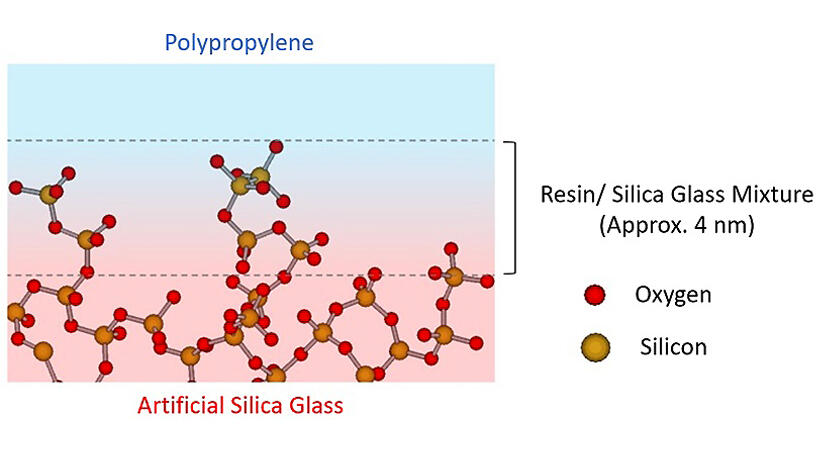A research group, including Kazuhiro Akutsu-Suyama and others, at the CROSS of the Neutron Science and Technology Center, collaborated with the researchers at the Japan Proton Accelerator Research Complex (J-PARC) of the Japan Atomic Energy Agency, and structurally analyzed ceramic-precursor inorganic polymer (PHPS)-derived silica glass films (PDS films) embedded in resin (polypropylene) samples using a polarized neutron reflectometer (SHARAKU) installed at the J-PARC Materials and Life Science Experimental Facility (MLF). They found that the PDS films formed a high-density silica glass layer with a thickness of ~10 nm, and a mixed layer of silica glass/polypropylene with a thickness of ~4 nm. Although various studies have been conducted on PHPS, the reason why PHPS is able to be used in a wide variety of materials remains unclear.
Therefore, the research group developed a method for obtaining high-quality neutron reflectance data by removing the background scattering using neutron polarization analysis, and conducted an experiment using a sample that could simulate the condition of the insulating layer of the semiconductor. Consequently, it was revealed that the PHPS-derived silica glass film formed a low-density silica glass layer with a thickness of ~4 nm on its surface. This low-density silica glass layer significantly enhanced the bond between different materials. In addition, it is considered that silica glass and polypropylene were firmly interdigitated within the mixed layer and could not be easily peeled off. Therefore, it was concluded that the formation of the special layer, in which silica glass and resin were mixed, caused the strong bonding in the artificial silica glass film.
Akutsu-Suyama said that the group are conducting research on glass coating methods for cellulose membranes and other materials that are currently attracting attention as highly functional plant-derived materials. If glass coating on cellulose membranes is achieved, highly sustainable, durable, and waterproof materials can be obtained. Furthermore, they will continue their research on the development of new composite materials, in addition to the study on the interfaces between artificial glass membranes.

■PHPS: A ceramic-precursor inorganic polymer. Hydrogen and nitrogen are released by hydrolysis and oxidation in the atmosphere, and the silica-glass (SiO2) film is formed.
This article has been translated by JST with permission from The Science News Ltd.(https://sci-news.co.jp/). Unauthorized reproduction of the article and photographs is prohibited.




